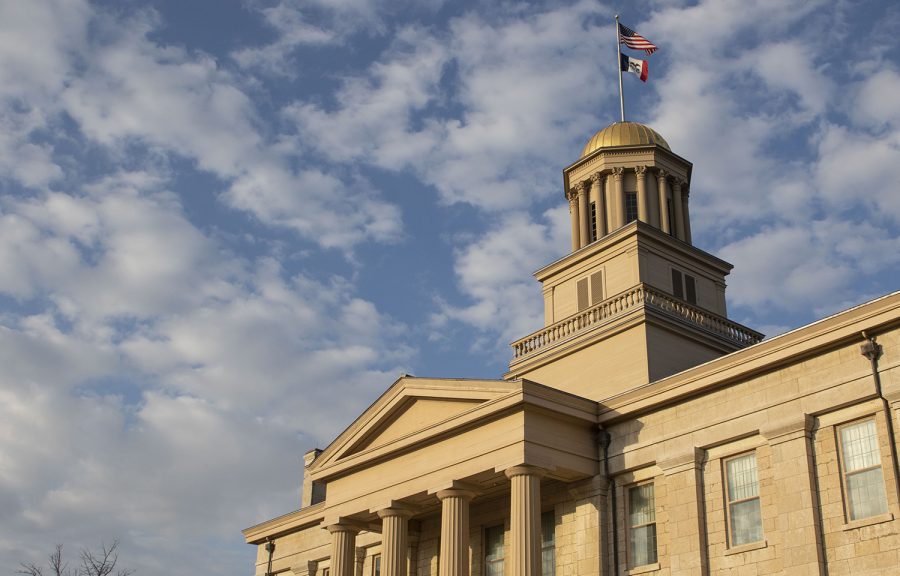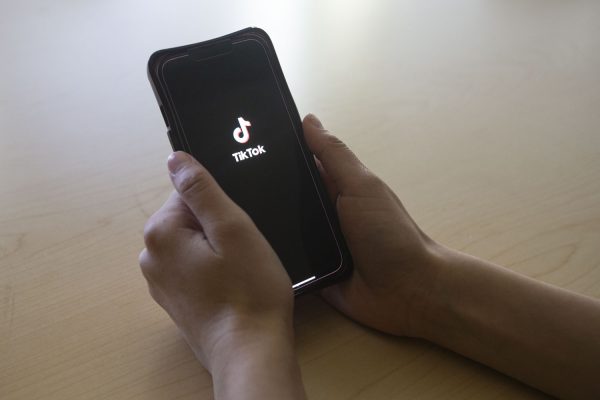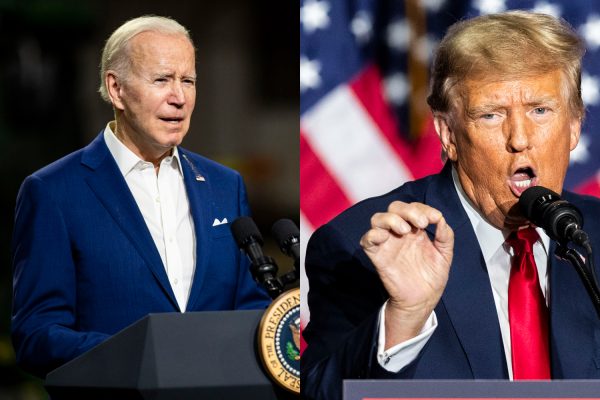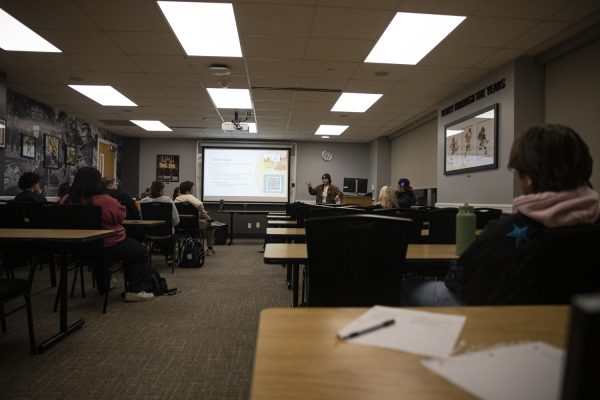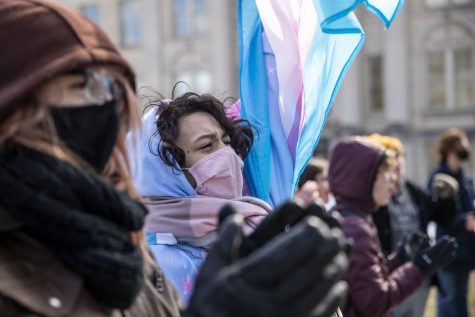Editorial | As we cross one milestone, here’s what we want from the university in the next 25 years
The University of Iowa has had a commendable history, but more can be done in sustainability, student and faculty recruitment, and tuition to propel it into the future.
The Old Capitol building is seen on March, 6, 2021.
February 22, 2022
This Friday, the University of Iowa officially celebrates 175 years since its founding.
As Iowa’s oldest institution for higher education, the University of Iowa has a lot to be proud of. The UI is not only acclaimed as one of the best medical centers in the country, but praised for its excellence in arts and sciences. Beyond education, the UI strives to make the campus an inclusive and innovative environment.
In 175 years, the UI has made several progressive steps in the right direction. The university is a leader in promoting sustainability, equity, and accessibility. But, by no means is our job over.
In the next 25 years, we want to see the UI address environmental concerns and move toward a more sustainable future, improve racial and gender demographics among faculty and staff, and make education more accessible by improving tuition cost.
Environmental concerns
“Sustainability must and will become a central priority of all aspects of our university enterprise — our operations, our academic mission, and our responsibilities to the greater society,” former UI President Sally Mason said over a decade ago.
Sustainability has become a central concern to the UI in recent years. On Earth Day in 2008, Mason called for a newfound commitment to achieving sustainability locally and globally through its work to serve Iowa and the world with education, research, and service.
This commitment initiated seven sustainability goals for 2020, including net-negative energy growth, and more student sustainability opportunities.
Last year, the UI announced each goal was met, or exceeded, with the exception of decreasing waste, which is still in progress.
In April 2020, the UI released the 2030 sustainability goals framework. This proposal includes reducing greenhouse gas emissions, embedding sustainability into campus culture, and preparing students to live and work in the 21st century through sustainability education.
In addition, the UI announced it will be coal-free by 2025 by transitioning to biomass and other renewable energy sources.
While we value the commitment the UI has made to sustainability, we need the university to do more to address environmental concerns.
The UI has a considerable waste problem. While the university set the goal to divert 60 percent of waste to a recycling or composting facility, the diversion rate only hit 36 percent. The percentage of overall campus waste actually increased in the past decade, from 16.2 million pounds in 2010 to 19 million pounds in 2019.
Moving off coal is not nearly enough in the face of the catastrophic threat posed by a warming planet. Although biomass is a cleaner energy source than coal, it still produces emissions.
The UI needs to not only reduce its carbon emissions, but eliminate them. The university needs a substantial plan to either switch entirely to renewable energy like solar or wind, or offset its carbon emissions in other ways. Until then, it will continue to contribute to the dangers of climate change.
The progress the UI has made in sustainability is commendable, but work still needs to be done to improve the university’s waste and biomass reliance.
Recruitment of students and faculty — especially from underrepresented communities
The UI was among the first public universities to accept students regardless of race or gender. While our university has made progress and had achievements when it comes to diversity in the institution, we would like to see improvement in recruitment of faculty and students from underrepresented communities.
Currently, the majority of the UI’s population, which is 71.5 percent, identifies as white. Black or African American students make up 3.01 percent, Asian American students make up 3.19 percent, and Hispanic or Latino make up 4.56 percent.
The UI has a variety of organizations and centers on campus that celebrate diversity such as the Center for Diversity and Enrichment, cultural centers, and various student organizations. While it’s an important step that the university has taken strides to create an inclusive environment on campus, the DI Editorial Board wants to see the UI recruit from underrepresented communities to add to a diverse student population.
Additionally, we believe the university can better recruit not only students, but faculty and staff of color. Out of 1,300 tenured and tenure-track faculty members, only 23 percent are minorities and 35 percent are women. In the university’s total workforce, 15 percent of the population come from minority groups.
It’s no secret that the UI has struggled with the retention of faculty of color. Turnover in the diversity executive position; professors voicing their concerns over the UI’s Diversity, Equity, and Inclusion document; and the loss of Black professors in the English Department and elsewhere has sparked debate on campus over the UI’s DEI values.
Recruiting and retaining faculty and staff from underrepresented communities will not only bring in necessary voices to help diversify higher education, but they will also serve as needed role models for students from these communities.
Making Higher Education Affordable
Tuition for higher education was already expensive before the COVID-19 pandemic. Now, fewer students across the country are attending college, saying that it costs too much.
A survey from the ECMC group found that only 53 percent of high school students are likely to attend college, and that students are focusing on career change and post-college employment.
At the UI, enrollment rates have been on the decline since fall 2017. International student enrollment has also dropped consistently over the past five years, with the rate dropping 9.6 percent from fall 2020 to fall 2021.
Making tuition affordable will help expand the opportunity for more students to pursue higher education and attend the university.
While there are limitations as to what the UI can do to make tuition more affordable for students, it’s important that our administration advocates for affordable tuition to groups such as state Board of Regents and the Iowa Legislature.
Over the years, Iowa Republicans and the Legislature have decreased funding for Iowa’s universities. While Iowa Gov. Kim Reynolds’ budget proposal last year recommended a $15 million increase for state universities and the state Senate proposed a $8.2 million increase, lawmakers ultimately provided no increase in 2021.
With the increase in tuition rates and the decrease in state funding, it’s crucial that the UI pushes to make higher education a possibility for more students. This would potentially help increase student enrollment rates, thereby emphasizing the importance of the regent universities to Iowa Republicans and possibly persuade them to increase state funding.
Editorials reflect the majority opinion of the DI Editorial Board and not the opinion of the publisher, Student Publications Inc., or the University of Iowa.
Editorial board members are Caleb McCullough, Rylee Wilson, Josie Fischels, Hannah Pinski, Sophia Meador, and Yassie Buchanan.



